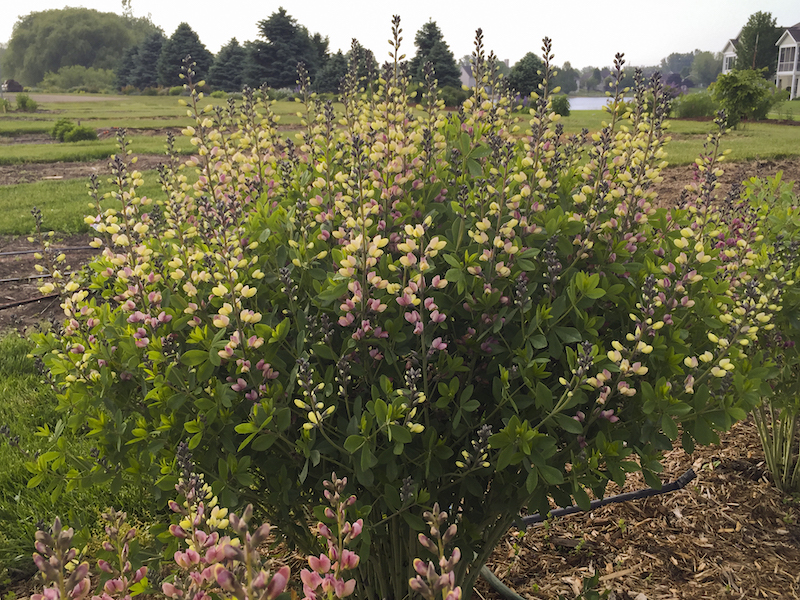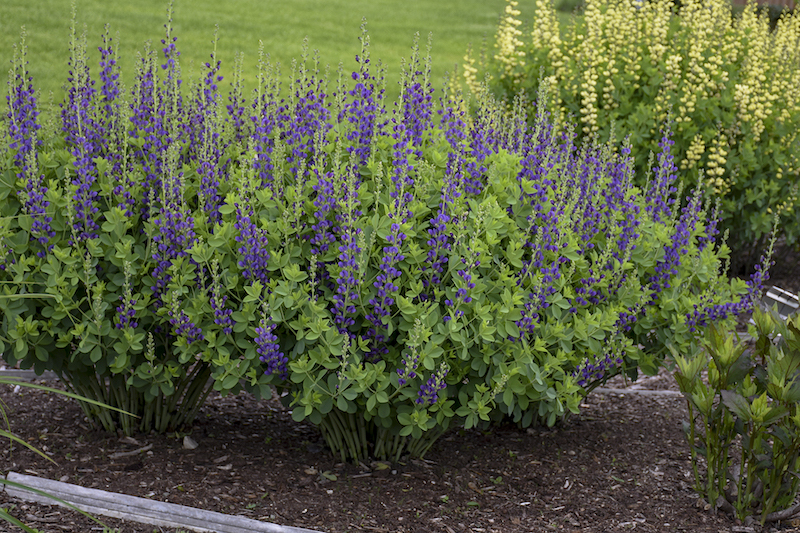False Indigo, also known as baptisia, should watered regularly for the first year until it is well established, after which it can be watered deeply every couple of weeks. Baptisia is a native wildflower in most regions and develops drought resistant, surviving on whatever rainfall it receives. It has a rather long taproot, which helps it to access moisture where other perennials may not. False Indigo will thrive equally well in dry or humid climates, provided it receives adequate moisture.

How To Tell If False Indigo Needs Water
Wilting or yellow leaves can be a sign that the plant is either getting too much water or too little. Dry leaf tips or dry leaves in an obviously dry, cracked soil mean the plant needs to be watered; yellow leaves appearing on a plant in moist soil often indicate that the plant is being overwatered. Indigo needs a fine balance when it comes to watering; it's best to err on the side of less water, especially for established plants. Too much water can cause crown rot and either kill the plant or stunt its growth.

How Often To Water False Indigo
Water newly planted False Indigo plants well for the first season until they are well established and more often in dry weather. Maintaining a frequent watering schedule in the plant's first season will help it to develop its long taproot, resulting in greater drought resistance over time. Under average climate conditions, it may not require supplemental water.
Best Time To Water False Indigo
Plants grown in pots should be watered well at least once a week and more frequently in dry conditions. It is best to water False Indigo in the morning during the growing season to allow any water on the leaves to evaporate in the sun. This helps to avoid any mildew problems that might arise with watering at night. The plant requires no watering in winter as it is dormant.

False Indigo Watering Tip
- Water newly established plants frequently
- Provide at least an inch of water per week
- Yellow leaves on a plant in moist soil often indicates overwatering
 |
Author Chris Link - Published 08-10-2022 |
